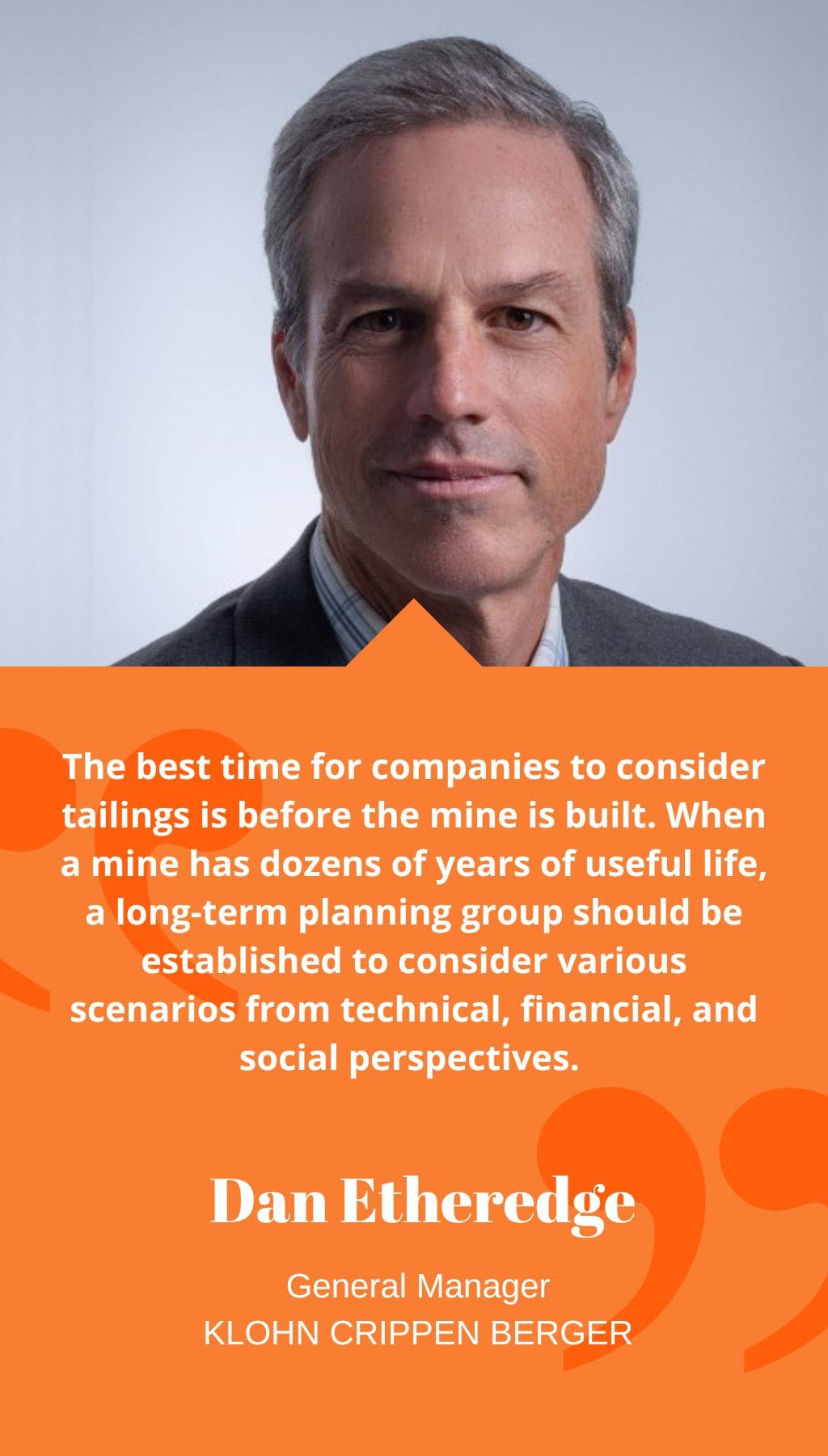
- Peru | 4 July 2021

Could you share with us how 2020 was for Klohn Crippen Berger (KCB) in South America?
Surprisingly, 2020 was one of KCB’s most active years ever, and we were able to surpass our pre-Covid plans and budgets. However, it was also a challenging year as we had to be very selective in the work we took on due to the competitive market. We have been actively hiring, but the market is very tight. Our profile in Brazil has expanded significantly due to the work we did in response to the recent high-profile dam failures. This has resulted in more work for us, including dam break studies and risk reviews and assessments.
What are your thoughts on the launch of the Global Tailings Standard in August 2020? Do you think it has improved the state of tailings management?
We believe the launch of the Global Tailings Standard was great for the industry and for KCB as well. As a company, we have always been an advocate for tailings design and management stewardship, and the standard has raised our profile. The majority of companies, especially the multinationals, are now taking tailings more seriously with a more conservative approach.
Can you tell us about the type of tailings projects that KCB has been working on in South America and what clients are currently asking for?
The bulk of KCB South America’s projects are related to tailings, including seismic hazard assessment updates, site selection studies for new facilities, tailings technology trade-off studies, and dam raise designs. Clients are now taking a long-term approach in their thinking and are focusing more on lowering risk profiles. This includes analyzing the impact of a couple of smaller structures with lesser classifications instead of one massive structure with an extreme consequence classification. Clients are also considering changing tailings technologies to thickened or filtered tailings, for example, to reduce risk. We have been working with the full range of clients between juniors, intermediates, and majors. Hochschild has been a long-time client of ours, and we continue to do significant work for them, both on new facilities and closures. When a new client approaches us, we assess their policies and standards to determine if we can set up a working relationship.
What are the benefits of dry tailings deposits compared to the traditional subaqueous deposition method?
Traditional tailings are a slurry, and there are many considerations to manage such as seepage, filtration, spillways, and excessive storm events. These potential risks make the process of managing traditional tailings quite challenging. On the other hand, a dry stack facility presents less risk. For example, in the event of runout, a dry stack deposit’s impact is significantly less compared to a conventional tailings facility, depending on the size and profile of the facility, of course. The capex for a dry stack facility is usually higher, but the risk profile is significantly lower.
When do you believe is the best time for companies to consider tailings issues?
The best time for companies to consider tailings is before the mine is built. When a mine has dozens of years of useful life, a long-term planning group should be established to consider various scenarios from technical, financial, and social perspectives. With this long-term planning approach, a multiple accounts analysis of different options can be conducted, resulting in a better plan moving forward. With advancements in technology, companies can improve not only their design standards and criteria but also take into consideration closure scenarios way before they get to that point. Considering all scenarios in advance enables companies to select the best option and avoid being forced into choosing a less optimal alternative.














